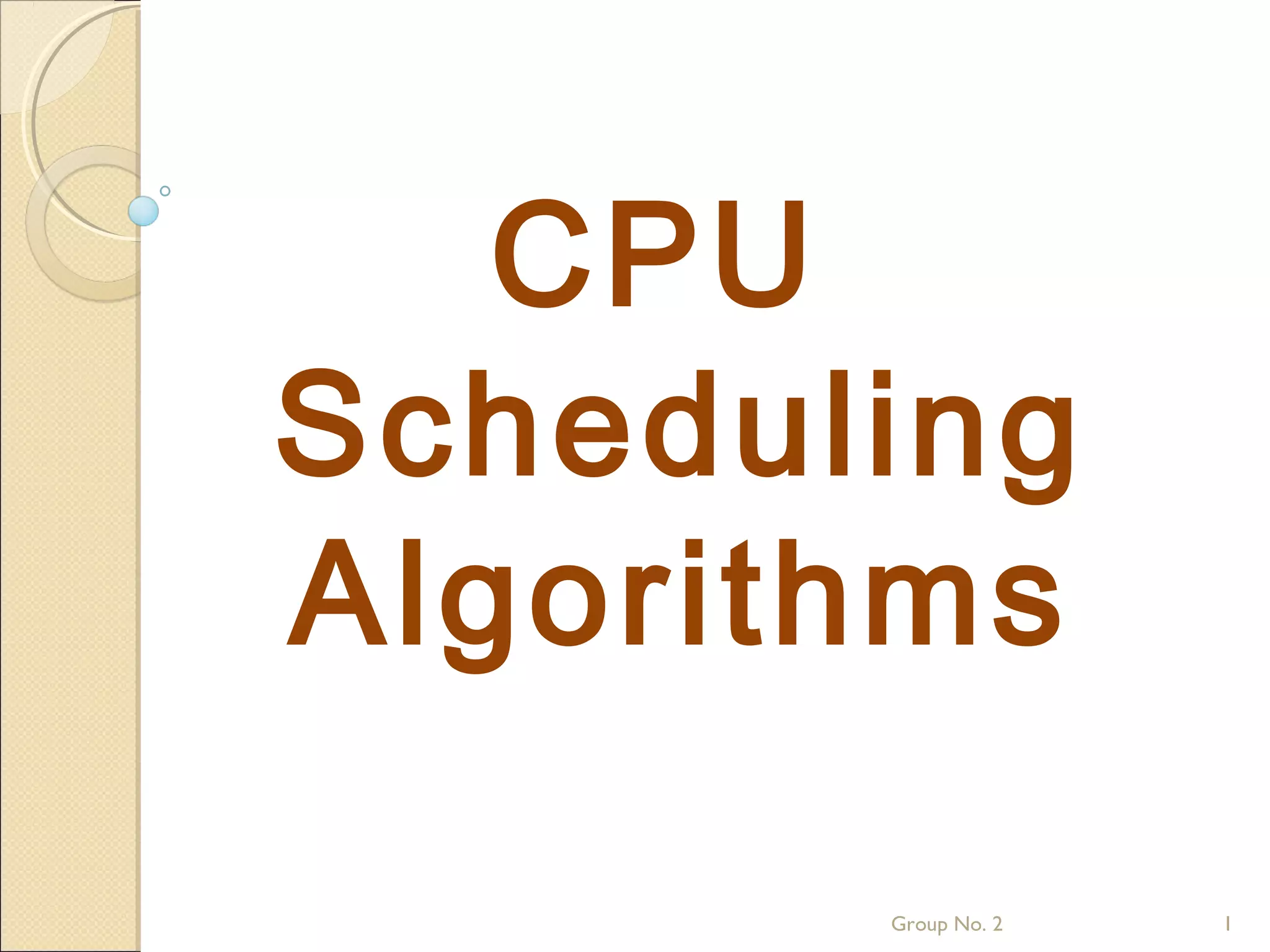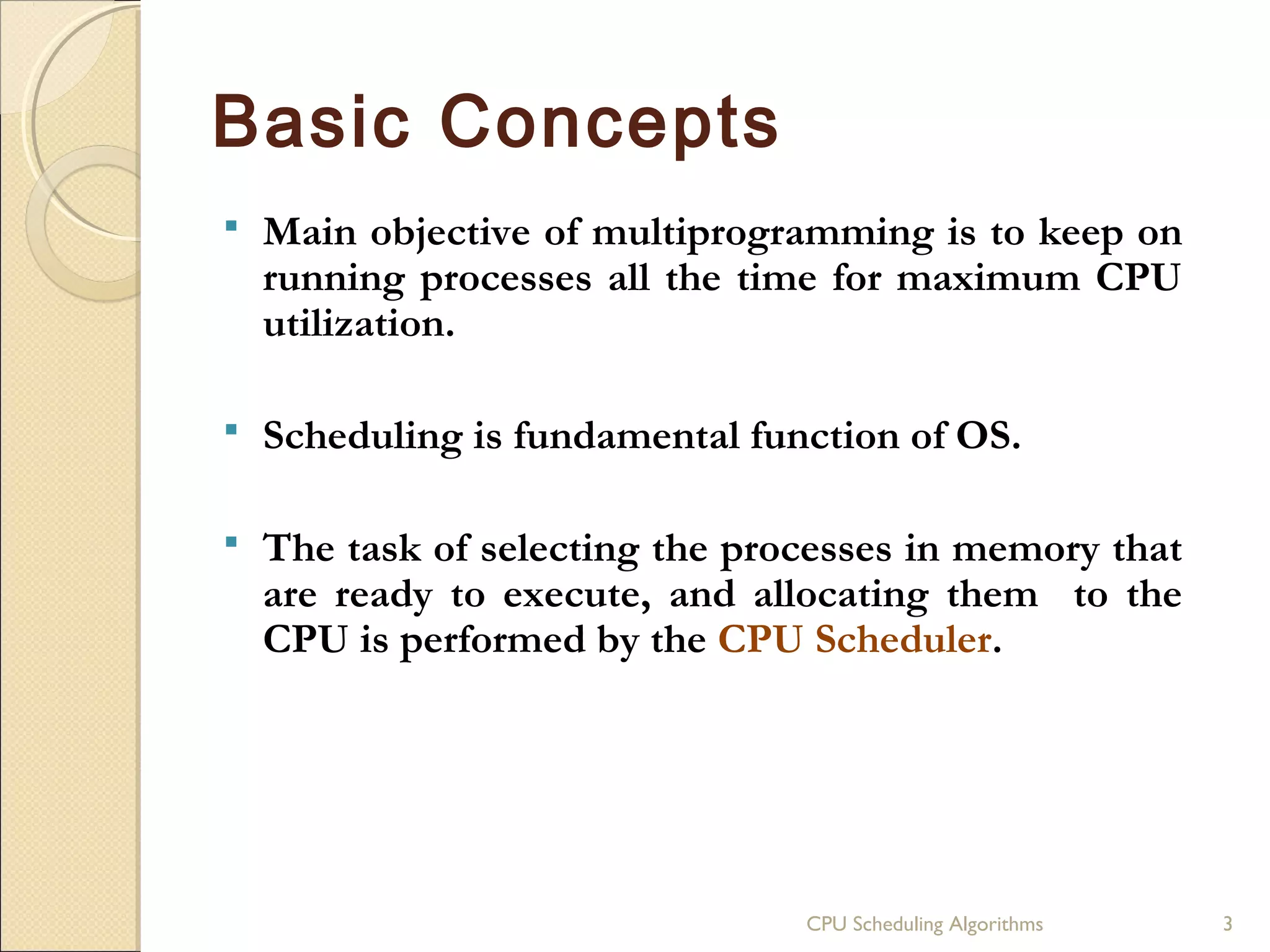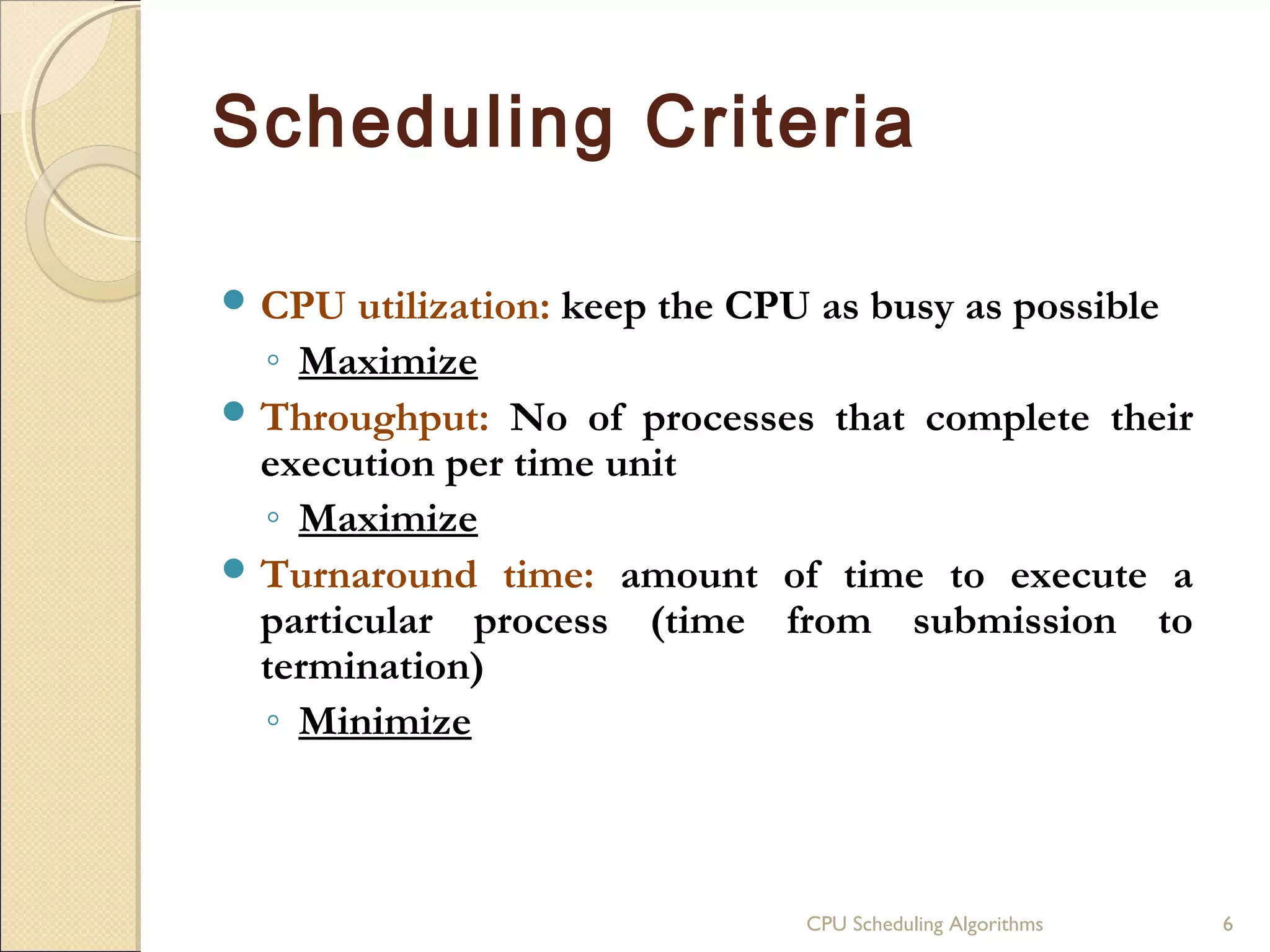The document discusses various CPU scheduling algorithms including first come first served, shortest job first, priority, and round robin. It describes the basic concepts of CPU scheduling and criteria for evaluating algorithms. Implementation details are provided for shortest job first, priority, and round robin scheduling in C++.








![Implementation in C++
Class: cpuschedule
Attributes:
o n – number of processes
o Bu[ ] – Array to store Burst Time
o A[ ] – Array to store Arrival Time
o Wt[ ] – Array to store Waiting Time
o Twt – Total Waiting Time
o Awt – Average Waiting Time
CPU Scheduling Algorithms 9](https://image.slidesharecdn.com/final-130402232110-phpapp02/75/CPU-Scheduling-Algorithms-9-2048.jpg)









![Round Robin
Process Burst Time
P1 24
P2 3
P3 3
Quantum time = 4 milliseconds
The Gantt chart is:
P1 P2 P3 P1 P1 P1 P1 P1
0 4 7 10 14 18 22 26 30
Average waiting time = {[0+(10-4)]+4+7}/3 = 5.6
CPU Scheduling Algorithms 19](https://image.slidesharecdn.com/final-130402232110-phpapp02/75/CPU-Scheduling-Algorithms-19-2048.jpg)


